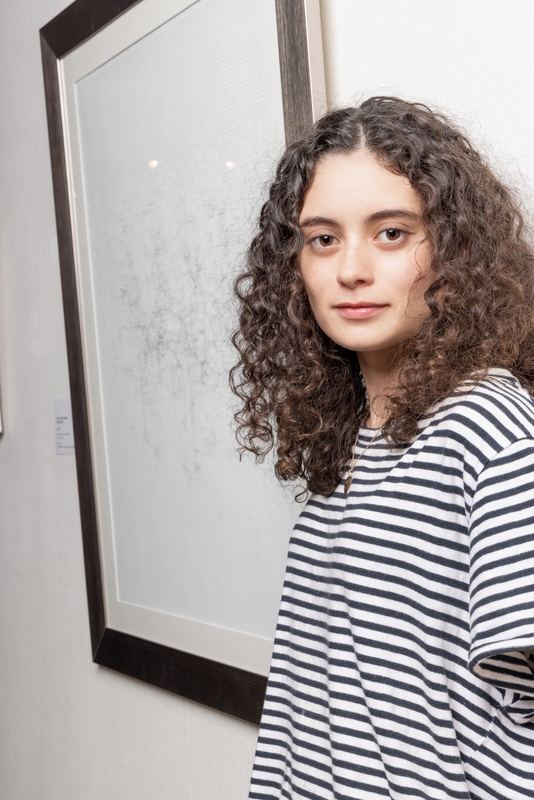Vertigo
Ink and graphite on paper
107,5 cm x 83 cm
Telegraphy, today considered an outdated means of electronic communication, played a revolutionary role in the development of contemporary communicative practices. As the forerunner of instant messaging, the telegraphic system laid the foundation for the invisible circuitry system that facilitates the movement of information today. Similar to the nervous system, the telegraph broke down texts into electrical codes that were rapidly transported across space and time and reassembled into coherent messages. Using the synergistic relationship between telegraphy and the nervous system as a blueprint, this artwork explores the sensory vertigo that sometimes occurs with the constant influx of information.


Q&A
Tell us what your reaction was when you received the news.
Surprised. I was caught quite off guard on a week that had not started off on a great note. I jumped up and found someone to hug without warning or context.
Is this the first time you have entered the competition? If so why and if not how many times and why is this competition an important one for you
It is the first time I have entered this competition. Our visual arts department at NMU stressed the importance of entering competitions like this for growing as artists and getting a feel for the prep work that goes into creating and submitting conceptual pieces. Preparing for the submission of Vertigo was a big learning curve that pushed me out of my comfort zone and enabled me to bring to life an idea that had been swimming around in my mind for a while.
Tell us a little about your artistic journey up until the point of entering Sasol New Signatures 2023?
I did fine art as a subject in high school and my teachers left a lasting impression on me. During the nationwide lockdown in my matric year, while I was at odds with the infinite amount of directions my life could go, I discovered how passionate I was about brainstorming and coming up with creative ways of narrating our overwhelming human existence. This led me to studying at NMU where I continue to encounter intriguing people who stretch my mind and keep me wanting to narrate in different ways.
Who has had the biggest influence on your career as an artist to date?
There have been numerous artists around the world that have inspired me but I think my greatest influences to date would be my peers and my lecturers. If I were to name specific artists I am drawn to, Wassily Kandinsky has always fascinated me with his noisy paintings of music.
Tell us a little about why you created the piece you submitted?
Vertigo is an ode to the dying art of writing with a pen and a response to a fast-paced world that has fast-paced demands. It is the beginning of looking into the world of communications and grappling with how that affects people. Handwriting and specifically writing the alphabet is a small coping mechanism I have developed over time. I have always wanted to see what those little letters would look like if they were all put together on a page.
Tell us about your preferred medium/s …and why?
I enjoy a multimedia approach but traditional mediums like charcoal and graphite pencil are my favourite. And of course a trusty 003 or 005 point fine liner!
When people view your work – what reaction/response are you hoping to create?
I would hope people have the same response I had to Vertigo while I was making it. Slightly disconcerted from a distance. Is there anything on that page? And then one steps closer and then closer again until suddenly one can see the alphabet following its natural order. Until it starts to jumble up and fade out, becoming this matrix looking coded fabric that knots into a confusion of dendrite looking cursive. And if one stares at it long enough, one notices that each letter is handcrafted and hopefully that inspires one to pick up a pen and slow down a bit.
Why do you think your work was chosen as a top 7?
Perhaps because ‘sensory vertigo’ is something we all experience these days and written text is an increasingly obsolete way of communicating with one another; which is saddening, because so much of oneself can be found in one’s handwriting.
Which South African artists do you admire and why?
In terms of South African artists that operate within the field of conceptual art and use text to convey meaning, I deeply admire book artist Heléne van Aswegen and conceptual artist Willem Boshoff.










